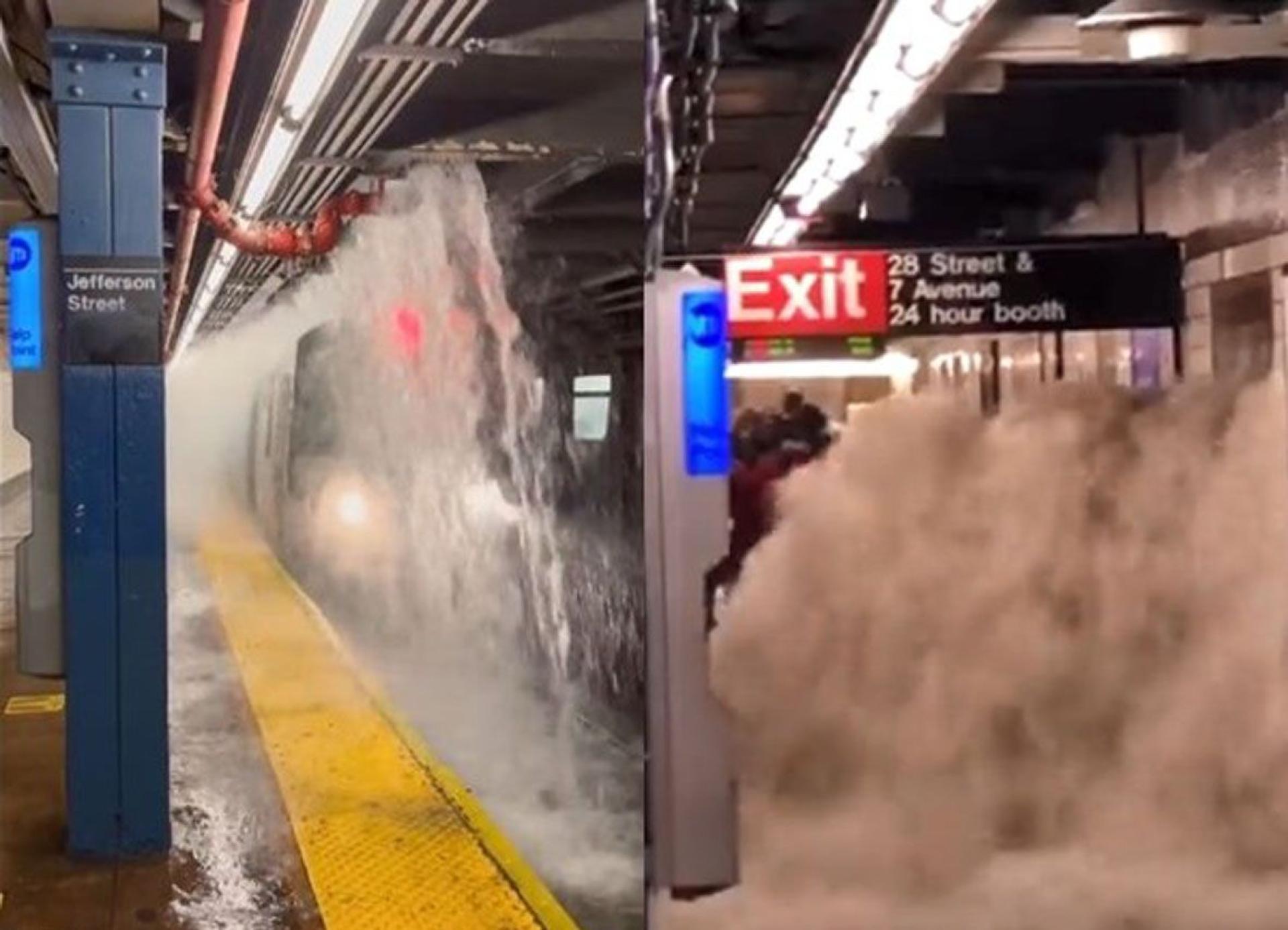Heavy rain recently hit New York City, causing severe flooding in subway stations. Multiple lines were suspended, and the main cause was that the subway and drainage systems lack modern urban capabilities to handle and channel extreme rainfall.
On the evening of the 14th, sudden thunderstorms and heavy rain struck New York. Many subway stations and tunnels were flooded, with water pouring in like miniature waterfalls—a shocking sight. Water surged in through subway tunnels, entrances, drain covers, and cracks, flooding onto platforms. Out of 472 subway stations, 20 had to be closed urgently, and multiple lines in the downtown Manhattan area were suspended.
The lack of flood prevention capabilities in New York's century-old subway is not news, as the underground drainage system is also based on infrastructure built a hundred years ago. In Manhattan’s downtown area, only a few layers of bedrock separate the groundwater from the subway tunnels, making it difficult to cope with rainfall variations caused by extreme weather.
The New York Times quoted the Metropolitan Transportation Authority (MTA) as saying that even on dry days, subway workers must frequently deal with water leakage in stations, having to pump out 10 to 13 million gallons of water daily. On the 14th, due to drainage system backflow, about 15 million gallons had to be pumped out.
Most of New York’s flood drainage channels and underground sewers are co-constructed, using the same pipelines for both flood drainage and building wastewater. They can only handle about 1.75 inches (4.445 centimeters) of water flow. On the 14th, accumulated rainwater reached 2.5 inches, exceeding the drainage system's capacity.
